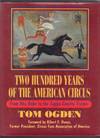![Opus pulcherrimus chiromantie cu[m] multis additionibus nouiter impressum](https://d3525k1ryd2155.cloudfront.net/h/835/653/1597653835.0.m.jpg)
Opus pulcherrimus chiromantie cu[m] multis additionibus nouiter impressum
by Chiromancy
- Used
- Condition
- See description
- Seller
-
Narberth, Pennsylvania, United States
Payment Methods Accepted
About This Item
Illustrated anonymous chiromancy combining natural science, astrology, medicine, divination and folklore. THIS IS THE SECOND KNOWN COPY OF THIS EDITION, AND THE ONLY COMPLETE.
The art of palm reading began to spread through medieval Europe with the 12th-century translation of Arabic and Greek philosophical texts. Some Aristotelian and pseudo-Aristotelian works, in particular, legitimized the practice as a form of physiognomy. Chiromancy was soon linked to astrology - another system for the interpretation of natural signs - and, by the 15th century, had become a ubiquitous instrument of medical diagnosis, political strategy and fortune-telling. Its ambiguous scientific and religious status appealed to both university professors and practitioners of the occult arts.
Organized in five chapters, the book first introduces the principal physical features of the hand, their names (first hand diagram), and their connection to the seven planets (second diagram). The remaining nineteen woodcuts show the astrological symbols of the planets in their corresponding location. Each illustration includes three to eight abstract signs, representing skin creases and fine lines, whose placement on the palm reveals planetary influence and character. The mound below the index finger (Sun) indicates a propensity to creativity and ingenuity, the ball of the thumb (Venus) denotes people who enjoy sex and laughter, etc. The signs' shapes predict future events - stomachache to patricide.
The rest of the text treats the five principal palm lines and provides a variety of interpretations of their definition, color, length, depth, direction and intersections - fertility, impotence, upcoming inheritance, death within the year.... Hand dimension and proportions, fingers' thickness and length and shape of the nails are also covered.
For this edition, his fourth and final of this manual, BENALIUS INSERTED IN THE TEXT DOZENS OF SMALL SYMBOLS, TYPOGRAPHIC OR WOODCUT, in some cases challenging the compositor, who, for instance, used a roman font upper-case c to illustrate the shape of a skin crease (f. b8v) and failed to insert a symbol, leaving a lacuna in the text (f. d3v). In very good condition. From the library of James Carnegie, 9th Earl of Southesk (bookplate), who acquired it in 1862 (his dated signature on the front flyleaf).
¶Sander, Le Livre à figures italien 1943; Thorndike, A History of Magic and Experimental Science 2: 231 & 5: 56 & 675; Baroncelli, Catalogo degli incunabuli della Biblioteca Ugo da Como di Lonato App. 1, 1 (lacking title, incorrect text type); IGI VI Aggiunte 125 (after Sander & Baroncelli); ISTC ic00467300 (as IGI); GW 0664210N (title after this ex. but incorrect text type); see Fürbeth's "Das Johannes Hartlieb zugeschriebene Buch von der Hand im Kontext der Chiromantie des Mittelalters" in Zeitschrift für deutsches Altertum und deutsche Literatur 136/4 (2007) 449-79 and Rapisarda's Manuali medievali di chiromanzia 14-30 and Typenrepertorium der Wiegendrucke https://tw.staatsbibliothek-berlin.de/of0097 28:88G.
Reviews
(Log in or Create an Account first!)
Details
- Bookseller
- Bruce McKittrick Rare Books
(US)
- Bookseller's Inventory #
- 12020
- Title
- Opus pulcherrimus chiromantie cu[m] multis additionibus nouiter impressum
- Author
- Chiromancy
- Format/Binding
- Late 19th-century English dark blue calf, blind-rolled outer frame, double gilt-ruled and blind-rolled inner frame with gilt and
- Book Condition
- Used
- Quantity Available
- 1
- Publisher
- B. Benalius
- Place of Publication
- Venice
- Date Published
- 1501
Terms of Sale
Bruce McKittrick Rare Books
All books are sent on approval and may be returned for any reason within ten days.
We ask that customers not known to us supply trade references or remit pro forma. We accept checks and wire transfers as well as Visa and MasterCard. All books offered are subject to prior sale.
Postage and insurance are gratis. For domestic orders we use UPS. International orders are shipped by USPS Registered Air Mail or Federal Express, unless otherwise instructed.
About the Seller
Bruce McKittrick Rare Books
About Bruce McKittrick Rare Books
Glossary
Some terminology that may be used in this description includes:
- Calf
- Calf or calf hide is a common form of leather binding. Calf binding is naturally a light brown but there are ways to treat the...
- Fine
- A book in fine condition exhibits no flaws. A fine condition book closely approaches As New condition, but may lack the...
- Gilt
- The decorative application of gold or gold coloring to a portion of a book on the spine, edges of the text block, or an inlay in...
- Spine
- The outer portion of a book which covers the actual binding. The spine usually faces outward when a book is placed on a shelf....
- Edges
- The collective of the top, fore and bottom edges of the text block of the book, being that part of the edges of the pages of a...
![Opus pulcherrimus chiromantie cu[m] multis additionibus nouiter impressum](https://d3525k1ryd2155.cloudfront.net/h/835/653/1597653835.0.s.jpg)
![Opus pulcherrimus chiromantie cu[m] multis additionibus nouiter impressum](https://d3525k1ryd2155.cloudfront.net/h/835/653/1597653835.1.s.jpg)
![Opus pulcherrimus chiromantie cu[m] multis additionibus nouiter impressum](https://d3525k1ryd2155.cloudfront.net/h/835/653/1597653835.2.s.jpg)
![Opus pulcherrimus chiromantie cu[m] multis additionibus nouiter impressum](https://d3525k1ryd2155.cloudfront.net/h/835/653/1597653835.3.s.jpg)

